INTRODUCTION
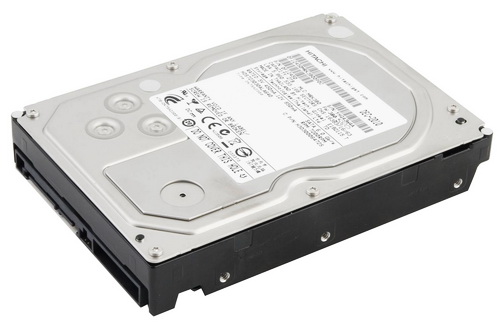
When i first started using a personal computer i remember that i chose a configuration with an 300MB hard disk drive which was not only the highest capacity drive available at the time but it also cost as much as half of the entire system. Almost 22 years later technology has advanced to a level where a person can actually purchase one of the latest entry level 4TB hard disk drives (4000000MB) for less than USD350/300Euros, currently that is since prices tend to fall. Hitachi GST has already released 3 different 4TB HDD models in the market, two in their Deskstar consumer oriented line and one in their Ultrastar enterprise line. Today with us we have the high end consumer model, the Deskstar 7K4000 (HDS724040ALE640) and as usual it will go through rigorous testing to see just how well it performs compared to other hard disk drives in the market.
Hitachi GST was formed in 2003 from the strategic merger of the storage technology businesses within IBM Corporation and Hitachi, Ltd. Since that time, the company has built on the heritage of both industry pioneers to grow profitably as a major contributor in the global storage industry. The company has worked to bring a customer-focused and full-service approach to its storage solutions. In doing so, the company has set a high standard for product and service excellence with world-class operations, substantial technical knowledge and a comprehensive customer support infrastructure.
In the past I’ve checked quite a few products manufactured by Hitachi GST including many from both their Deskstar and Ultrastar lines so in a way i kinda know what to expect both in terms of performance and reliability from the latest Deskstar 7K4000. Still i have to say that i was expecting Hitachi GST to use a total of 4 plates, 1TB each to get up to 4TB instead of five 800GB ones (found in the 7K4000) but i am pretty certain they had good reason behind their decision. Numbers however is what matters with such reviews (and the product price) so without further delay let’s move to the rest of the review and see just how good the latest addition in the Hitachi GST Deskstar line of products is.
SPECIFICATIONS AND FEATURES

PACKAGING AND CONTENTS
Hitachi GST ships their Deskstar 7K4000 line inside a medium sized box with a product image at the front, its main specifications (RPM/Cache/Connection) and a few words about it in 3 languages. This is also the first time I’ve received an HDD in retail packaging and not OEM so i was a bit surprised.
The system compatibility along with a table showcasing the number of files types you can store in 4TB is present at the left side.
The contents of the package along with a few words about the products are present at the right side again in 3 languages.
At the rear we see a table listing some of the features found in the Deskstar 7K4000 in 9 languages.
The drive is securely placed inside a moisture barrier bag and between two formed plastic spacers.
A quickstart guide, an installation guide, a small bag with 4 mounting screws and the Deskstar 7K4000 are the things you will find inside the retail box.
THE DESKSTAR 7K4000 4TB
Just like the previous Deskstar 7K3000 the latest 7K4000 follows the same 3.5" profile and is identical to its predecessor.
As always the large sticker found at the top of the drive includes various information including the capacity, serial number, firmware, available sectors, manufacture origin, roll out date, available cache, power requirements, RPM and the connection type.
The three standard holes used to install 3.5" drives are located at each of the sides.
Moving at the rear we see the usual blue PCB used by Hitachi GST with all of the components placed on the opposite side.
Both the Deskstar and Ultrastar lines feature SATA 3 6Gb/s connectivity.
TEST BED


TESTING METHODOLOGY
Thoroughly testing hard disk drives may require time and patience but that's just about it. Of course that doesn't mean that one must take it lightly, at least not when people base their decision on your results. True many choose to only use 2 or 3 benchmarking suits in order to measure the performance of a drive or drives since quite honestly most benchmarking suites do tend to agree with each other. However i always like to take things a step further not because i have to but because i want to be almost 100% certain of the results i post (one can never be 100% certain about anything).
So in this kind of reviews we will use a total of 6 different benchmarking suites in an effort to bring you the most accurate results across the board. Now the only reason why i say effort is because real-world usage is almost never on par with what results one gets by running several benchmarks on a drive and that's mainly because there are many variables at work from ambient temperatures to hardware configurations. The benchmarking applications we use are the AIDA64 suite (former Everest Pro), HD Tune Professional, HD Tach RW, ATTO, Sisoftware Sandra Pro and the Crystal Disk Mark 64bit. These benchmarking tools are the best in what they do and as you will also see later on their results more or less agree. Each test is performed a total of 6 times and then the average is recorded into the charts. Temperatures are recorded using Hard Disk Sentinel and after 45 minutes of continuous testing in a 23 degrees Celsius temperature controlled room. Finally we also use an ExTech HD600 dBA meter on each of the drives in order to accurately record their noise levels, although if you don't turn off all system fans when doing so it's quite possible that you will never even hear the drive.
Since this is the first storage review with our latest X79 based test rig i also benchmarked several other disk drives from both Hitachi GST and Seagate purely for comparison reasons. The operating system as usual is a fresh installation of Microsoft Windows 7 Ultimate Service Pack 1 with every update released to date.
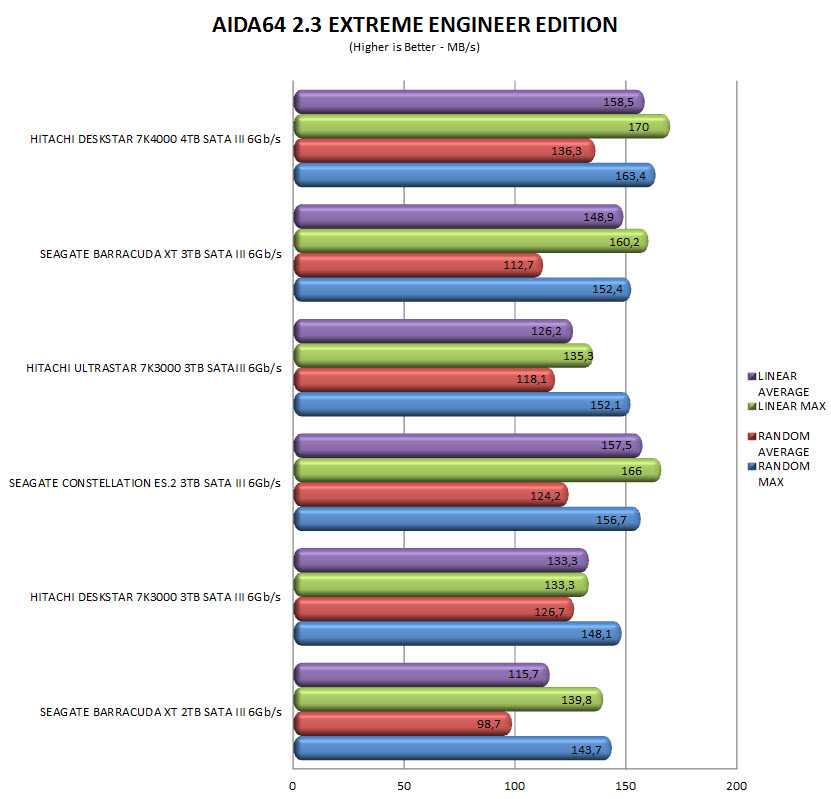
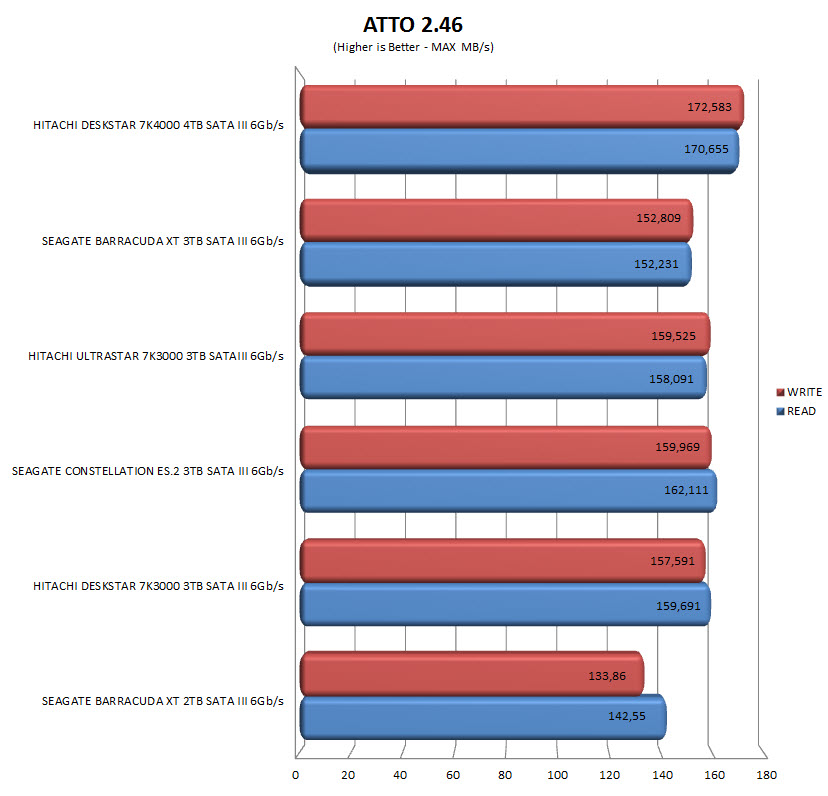
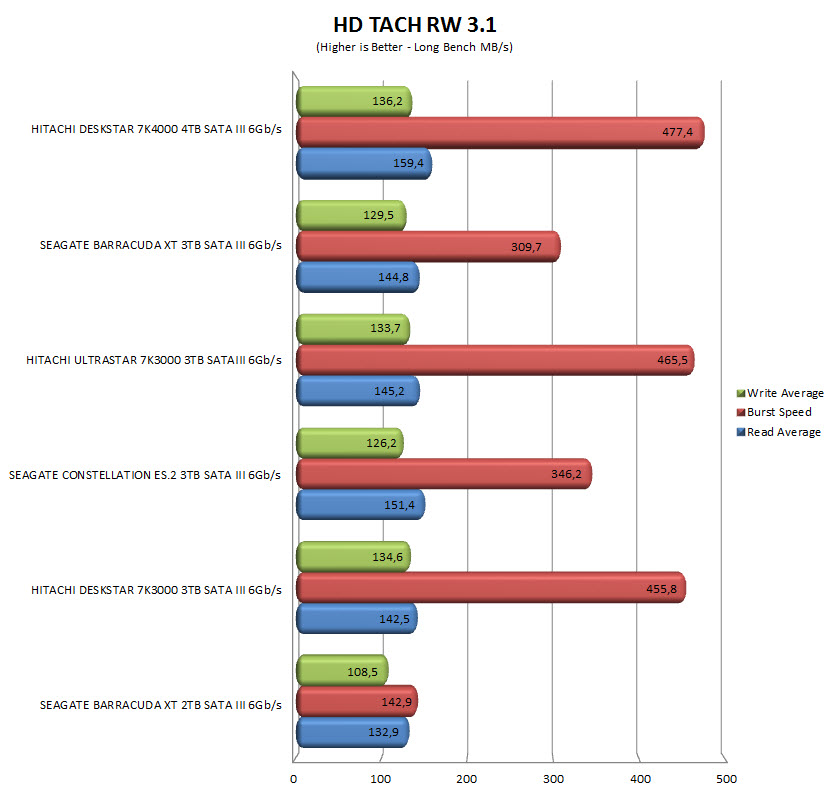
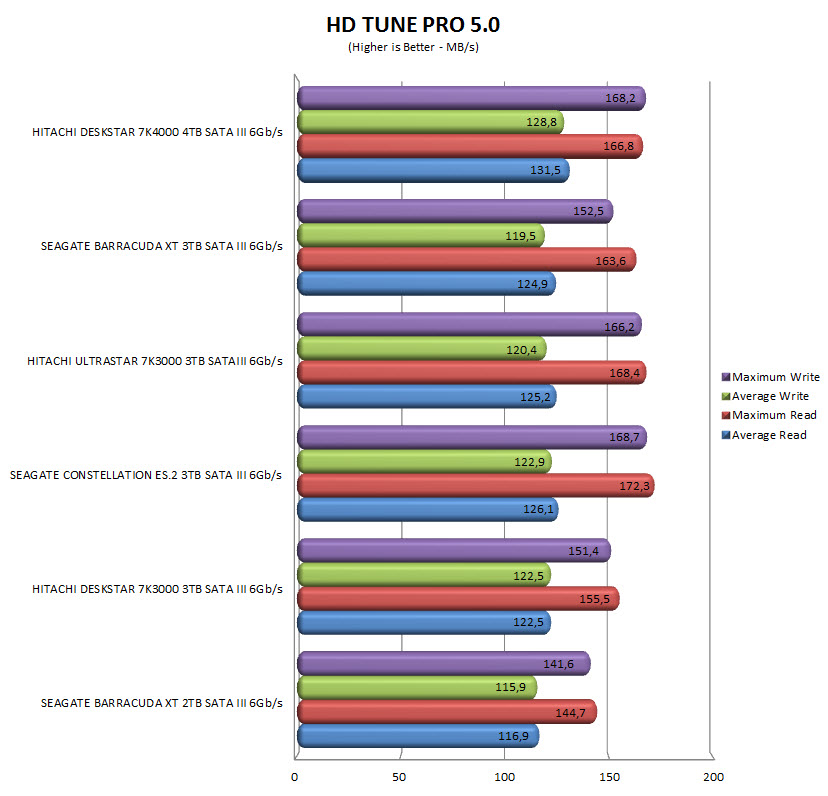
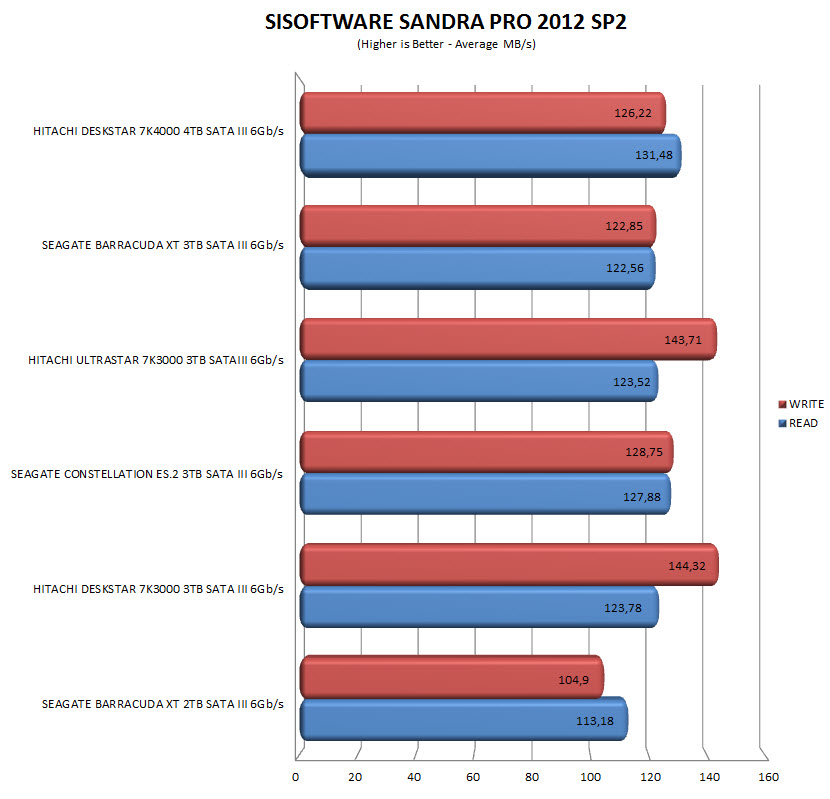



CONCLUSION
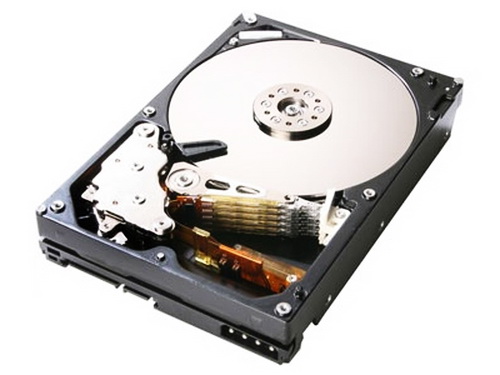
After i finished benchmarking all over again all the drives i have here i was expecting to see performance numbers along the same exact line as the 7K3000 series since the only difference (at least the only obvious one) with the latest 7K4000 line is the larger capacity plates of the second (600GB/800GB). Strangely enough however the Deskstar 7K4000 managed to surpass its predecessors in almost every test with ease and although the performance gap is not really big still it was something that caught me off guard so i guess Hitachi GST may have made some changes to the drive aside the larger plates. Regarding both noise levels and temperatures as expected the 7K4000 is almost identical to the 7K3000 (since both drives feature the same exact chassis and number of plates) so nothing really new to see here.
Monstrous capacity disk drives have always been expensive especially at their launch so it comes as no surprise that the single and only drawback of the Deskstar 7K4000 by Hitachi GST is it's price tag since currently this particular package retails at around USD420 inside the USA and 350Euros inside the EU. Of course not everyone needs 4TB of space so the Deskstar 7K4000 line is targeted at a specific part of the market which includes professionals and enthusiasts who can put to use any HDD regardless of size. Personally i have far too many TB's of data (mostly backup) so unless we see an 50TB drive soon i will always need many huge capacity drives to cover my needs and since the Deskstar 7K4000 not only proved to be very fast but it also features the highest available capacity (single drive) at the moment i am awarding it with our Platinum award.

PROS
- Build Quality
- Performance
- 4TB's Capacity
- Temperatures/Noise Levels
- 3 Years Warranty
CONS
- Price Tag

 O-Sense
O-Sense





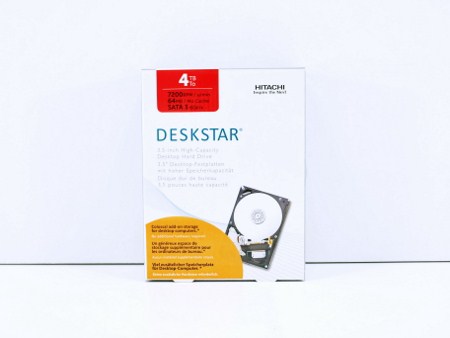
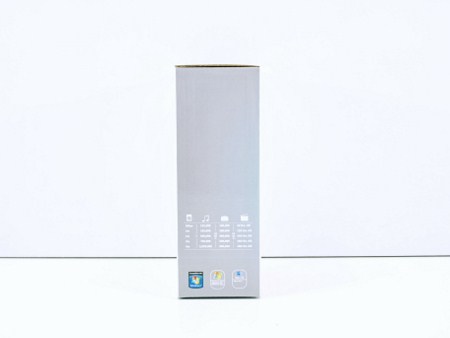
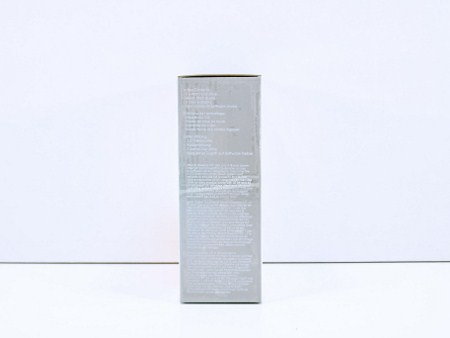
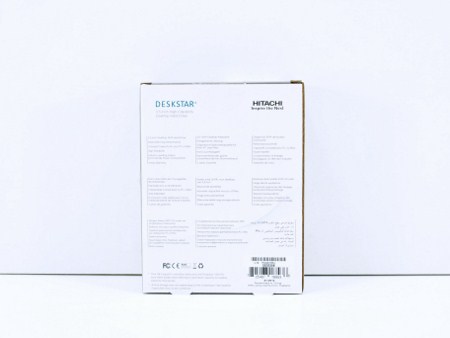
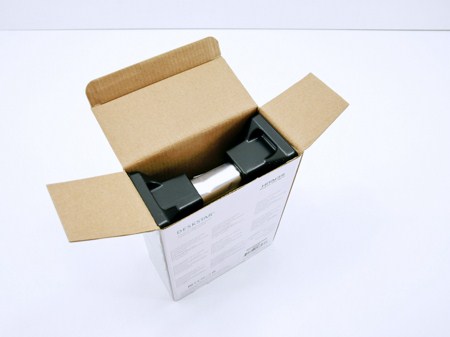
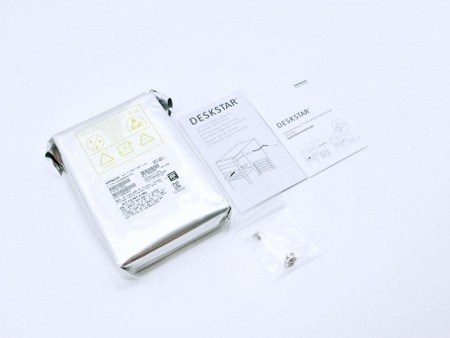
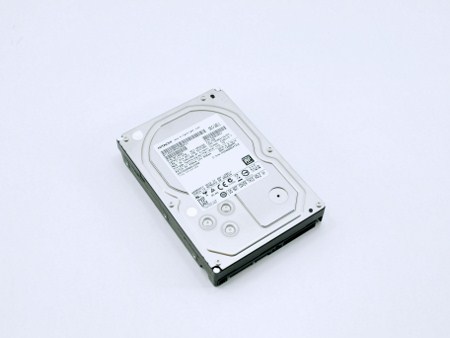
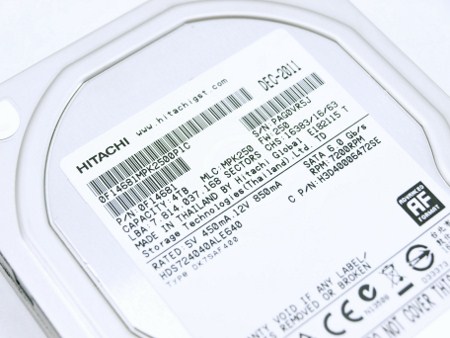
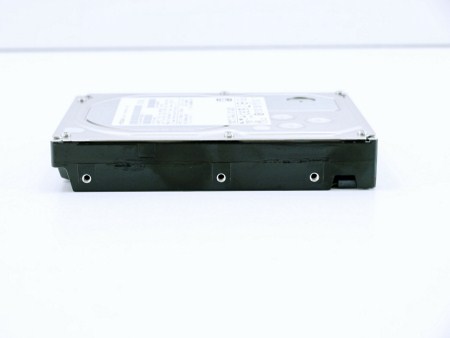
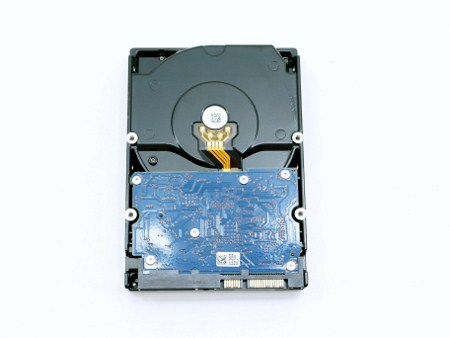
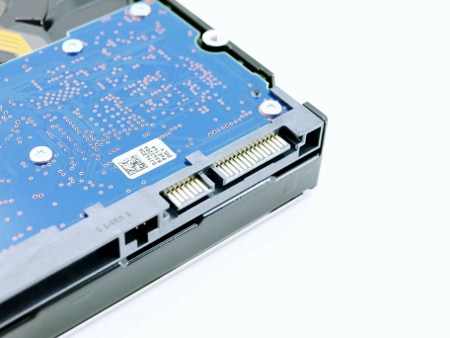


.png)

